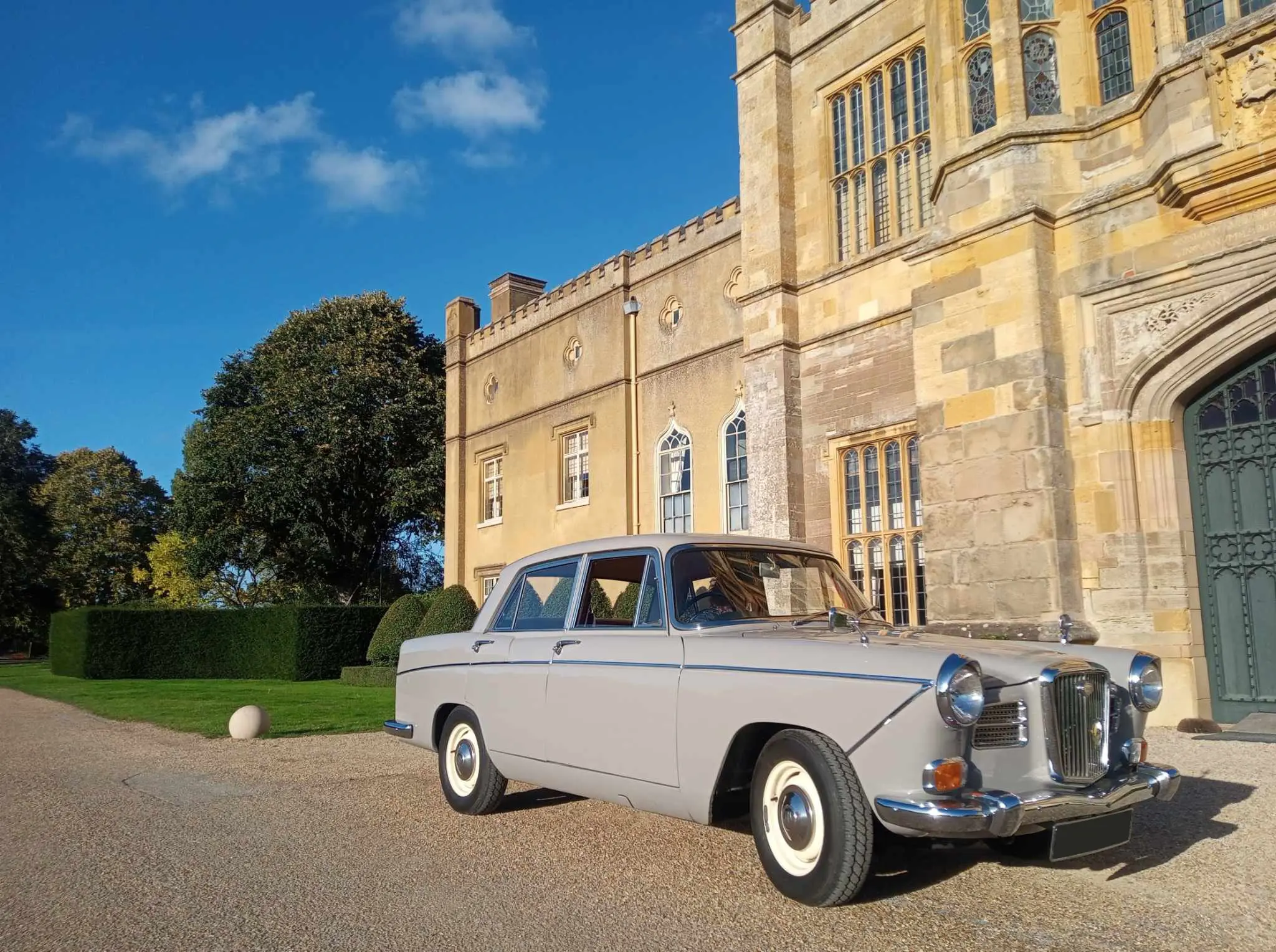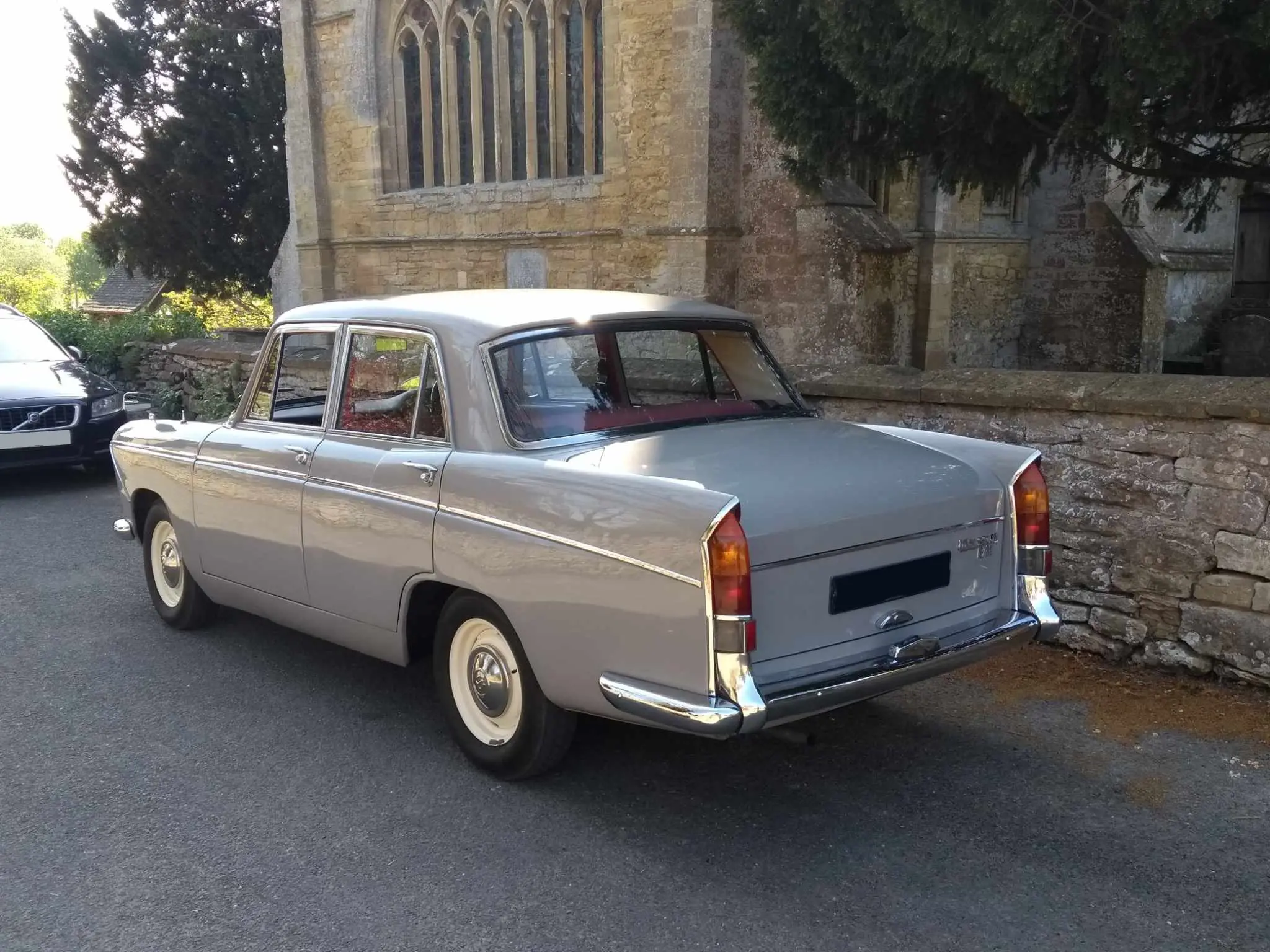MEET THE OWNER – PHILIP HANSON AND HIS WOLSELEY 16/60
13 May 2024
“My Wolseley was registered in Worcester in January 1967 and is a manual gearbox model. It has covered only 46,000 miles and I am only the second owner.” Philip undertook some body restoration in 2016 and the result is a car that lives up to the British Motor Corporation’s promise of: “Luxuriously practical...a car that satisfies.”

The Hanson Wolseley is also a reminder that a good deal of the media imagery surrounding the UK in 1967 is utter nonsense. “Swinging London” probably happened to about 50 people within a mile radius of Carnaby Street. Meanwhile, a 16/60 was far more representative of everyday life: sports jackets, twin sets, LPs by The Seekers and moaning about the impending demise of the BBC Home Service.
This is not to suggest the BMC ‘Farina’ range began its life prematurely middle-aged. When the original Wolseley 15/60 made its bow in December 1958, its tailfins caused alarm and consternation in certain parts of suburbia.
By April 1959, there was a five-car hierarchy of Farinas, commencing with the Austin A55 Cambridge Mk. II and progressing to the Morris Oxford Series VI, the Wolseley, the MG Magnette Mk. III and the Riley 4/68.
BMC revised the line-up in the autumn of 1961, fitting anti-roll bars front and rear, increasing the track size, lengthening the wheelbase, and, most significantly, replacing the 1.5-litre unit with a 1,622cc engine. The new Austin A60, Morris Oxford Series VI and Wolseley 16/60 now featured somewhat more restrained fins, as they are befitting motoring at its most respectable. Autocar thought of the Wolseley: “A great deal of thoughtful development work has been put into this latest model and without hesitation, this can be pronounced successful.”

In early 1967, the Wolseley cost £868, as opposed to £911 for the Arrow-series Singer Vogue, £788 for a Vauxhall Victor 101 De Luxe or £803 for the Ford Corsair De Luxe. All, especially the Singer, looked more contemporary than the 16/60, but they lacked the sense of being a headmaster’s study on wheels. Nor could any of this group boast a “traditional” radiator grill (with an illuminated badge) or a starting handle bracket. As for the Wolseley’s ivory-faced instruments with black markings, they are less Sgt. Pepper and more Sunday Night at the London Palladium.
Sales of the Wolseley ended in 1971 with the arrival of the Morris Marina. Philip finds his 16/60 utterly different to his 1975 Citroën CX, but equally rewarding to drive. In his words:
Everything feels very exact, as you’d expect for a car of that mileage. The 16/60 is very forgiving, with a precise gear change, light clutch and loads of torque. It is great for tootling along country lanes and B roads. The Wolseley feels like an old car to drive in a nostalgic way – the opposite of the CX, which feels like a modern car to drive and loves the main open road.
And Philip would surely agree with the famous sales slogan: ‘Buy Wisely – By Wolseley’.
With thanks to: Philip Hanson
